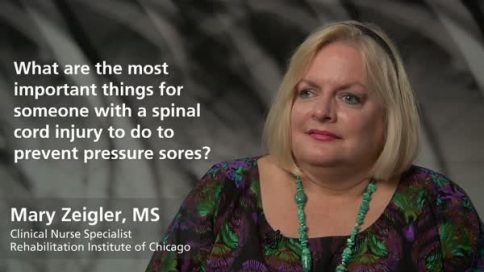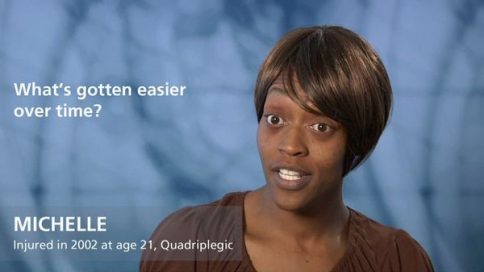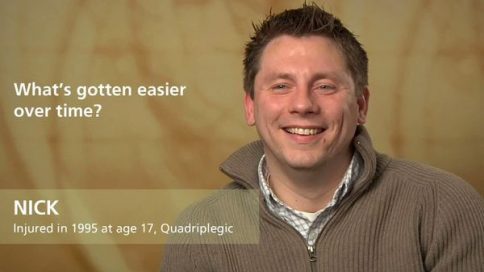How do physical therapists help people with spinal cord injuries prevent pressure sores? - Elaine Rogers, PT
|
|
How do physical therapists help people with spinal cord injuries prevent pressure sores? |
|
Elaine Rogers, PTPhysical Therapist, VA Puget Sound Health Care System, Seattle |
||
| Read Bio | More Videos by Elaine Rogers | |
|
Share |
||
Transcript
We’re involved in wound management from prevention of wounds, to recovery from wounds and to getting back to living life after a wound. Because if we’re not doing our job with wheelchair seating and with skills training, then we’re not teaching you how to prevent wounds. However, once there is a wound, the therapist has to be a key part of the investigation team of understanding why the wound occurred. And sometimes it’s very obvious that “I bumped my bottom when I was being transferred on to an airplane.” And likely that scenario won’t happen again, but we also need to understand with that newly-healed skin that is very fragile, how can we protect it? Are any of your prior skills or prior seating maybe not be ok now with that fragile skin, and maybe we need to rework those things. In some facilities, physical therapists are also involved with the actual wound healing and using electrical stimulation, which is a modality we use for wound healing, so we can be involved in that aspect. Anybody who has a flap surgery post-wound should have physical therapy going in and helping get the tissue stretched out after the flap surgery. Physical therapy and occupational therapy need to then be relooking at all of your skills, all of your equipment, not just your wheelchair, but your bathroom equipment, everywhere you sit and/or spend any length of time.
Show Less|
|
||
add
How do physical therapists help people with spinal cord injuries prevent pressure sores? |
||
Elaine Rogers, PTPhysical Therapist, VA Puget Sound Health Care System, Seattle |
More Videos by Elaine Rogers | |
| Transcriptadd | share | |
We’re involved in wound management from prevention of wounds, to recovery from wounds and to getting back to living life after a wound. Because if we’re not doing our job with wheelchair seating and with skills training, then we’re not teaching you how to prevent wounds. However, once there is a wound, the therapist has to be a key part of the investigation team of understanding why the wound occurred. And sometimes it’s very obvious that “I bumped my bottom when I was being transferred on to an airplane.” And likely that scenario won’t happen again, but we also need to understand with that newly-healed skin that is very fragile, how can we protect it? Are any of your prior skills or prior seating maybe not be ok now with that fragile skin, and maybe we need to rework those things. In some facilities, physical therapists are also involved with the actual wound healing and using electrical stimulation, which is a modality we use for wound healing, so we can be involved in that aspect. Anybody who has a flap surgery post-wound should have physical therapy going in and helping get the tissue stretched out after the flap surgery. Physical therapy and occupational therapy need to then be relooking at all of your skills, all of your equipment, not just your wheelchair, but your bathroom equipment, everywhere you sit and/or spend any length of time.
















































